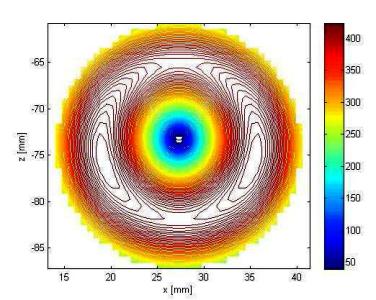
The term dosimetry refers to the evaluation of the amount (dose) and the distribution of electromagnetic power absorbed by the biological sample under examination, when both characteristics of the incident electromagnetic field (frequency, modulation, polarization) and the exposure conditions are known. The latter include the morphological and electromagnetic characteristics (dielectric permittivity and conductivity) of the exposed sample and environmental properties in which the exposure takes place. The specific absorption rate or SAR (Specific Absorption Rate in W/kg) represents the basic dosimetric quantity and is defined as the electromagnetic power dissipated per unit mass in the sample. The choice of the SAR as a reference dosimetric parameter results from its use in international regulations regarding the protection against electromagnetic fields, and the fact that it can be used to compare the biological effects observed in different exposure conditions.
Methods and techniques of dosimetry can be experimental but also theoretical and numerical. In particular, the experimental dosimetry emplys specific tools to measure the dosimetric quantities directly in the exposed sample. For SAR measurements, for example, electric field sensors, or thermal sensors, since it is also linked to the temperature increase in temperature caused by field exposure.
When it is not possible to measure SAR directly in the exposed sample, as in the case of human tissues, phantoms are realized to represent, as closely as possible, morphological and electromagnetic properties of the biological body, or parts of it.
The numerical dosimetry is the direct resolution of a system of Maxwell's equations, which describes the interaction between electromagnetic field and the biological sample, under the environmental and electromagnetic conditions under investigation. The use of computational codes (numerical dosimetry) and modern computers has greatly improved the performance of this type of analysis, allowing on the one hand, the representation of increasingly accurate and realistic models of exposed systems, and on the other hand, fast and efficient resolution of complex electromagnetic problems.




